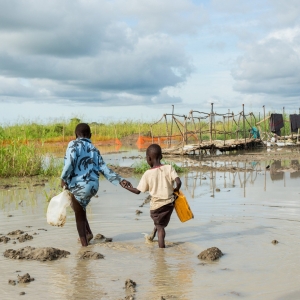Welcome to “What’s Up With Water,” your need-to-know news of the world’s water from Circle of Blue. I’m Eileen Wray-McCann.
In the United States, the California Department of Fish and Wildlife seeks to save a threatened species of salmon, which could also preserve the livelihood of local Native American tribes. Reuters reports that the state agency’s effort to save Chinook salmon coincides with several existential threats to the species. Climate change is warming river waters, while aging dams are blocking fish from their normal migration routes. Salmon have been sustenance for residents of the Hoopa Valley Reservation for centuries. Members of the tribe say the restoration of the Trinity River could help revive the fishing that is integral to their way of life.
In India, heavy rains swept across the Himalaya region, causing deadly landslides and floods. The BBC reports that in the northern state of Uttarakhand, bridges were washed away and 55 people died. Last week, the rainfall over 24 hours was 10 times the average rainfall for the entire month of October. To the east, swollen rivers and mudslides cut off the main highway between the states of West Bengal and Sikkim. The devastation extended into Nepal, where the storms killed dozens more. Such calamities occur frequently in the region, where steep slopes, land development, and an unstable climate are increasing the environmental risk.
In South Africa, workers are removing invasive pine trees to preserve watersheds that are vital to millions of residents in Cape Town. Reuters reports that the goal is to remove more than 130,000 acres of the trees by 2025. This will help the watershed regain what the trees consume – an estimated 55 billion liters of moisture each year. The pine trees are the backbone of South Africa’s commercial forestry industry, but their seeds spread rapidly from plantations to protected nature reserves. Those reserves are important for biodiversity in a region famous for its array of plant species. Removing invasive trees is one prong in Cape Town’s plan to become more water resilient. The efforts follow a severe three-year drought that nearly exhausted the city’s reservoirs in 2018.
And that’s “What’s Up With Water,” from Circle of Blue, where water speaks. More water news and analysis await you at
circleofblue.org. This is Eileen Wray-McCann – thanks for being here.





